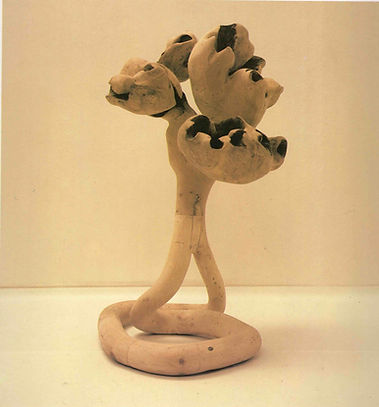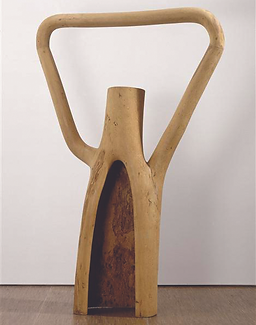
%2C%20lianes%2C%20bois%2C%20pal%C3%A9tuvier%20et%20pigments%20na.jpg)
Ecological fragments
Roots and flowers
In the 1960s and 70s, a new phase began with protruding roots and flowers. Frans Krajcberg discovered in the strength of the rhizome a vital, ancient energy—restless and aggressive—that suited him. However, he saw the flower as a messenger of death. His flowers emerge from twisted trunks, while the roots become flowers, deformed and bruised.
“He turned death into life, and life into art,” said Federico Morais in the catalog for the Frans Krajcberg exhibition at the Museum of Modern Art in Rio de Janeiro in 1965. According to the critic, his roots seemed “to want to scream with the same intensity as they violently break through the earth in their rhizomatic vanishing lines.”
Polished wood
Settled in Nova Viçosa, Frans Krajcberg creates his first “polished woods,” assemblages of dead wood from which he reveals architectural lines: hollow trees or mangroves, devoured by light.
"When I saw the mangroves, I was impressed. I come from Tachism, from Parisian Abstraction. How to capture the life of these forms, their changes and vibrations? Soto succeeded with the 'Penetrable' at the MAM plaza in Paris. In that white vibration, I found the Amazon forest again."




© Jacques Faujour
